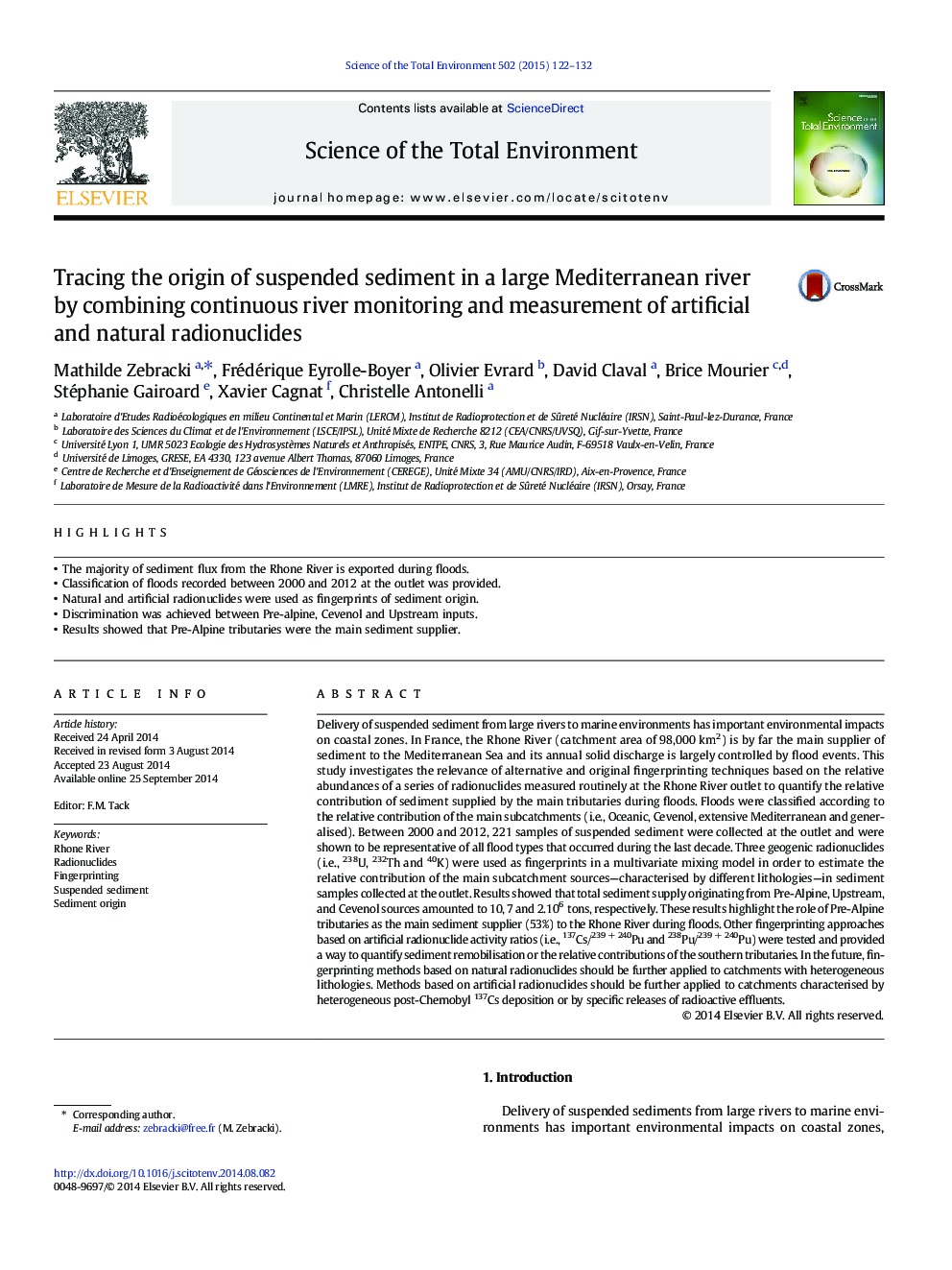| Article ID | Journal | Published Year | Pages | File Type |
|---|---|---|---|---|
| 6328392 | Science of The Total Environment | 2015 | 11 Pages |
â¢The majority of sediment flux from the Rhone River is exported during floods.â¢Classification of floods recorded between 2000 and 2012 at the outlet was provided.â¢Natural and artificial radionuclides were used as fingerprints of sediment origin.â¢Discrimination was achieved between Pre-alpine, Cevenol and Upstream inputs.â¢Results showed that Pre-Alpine tributaries were the main sediment supplier.
Delivery of suspended sediment from large rivers to marine environments has important environmental impacts on coastal zones. In France, the Rhone River (catchment area of 98,000Â km2) is by far the main supplier of sediment to the Mediterranean Sea and its annual solid discharge is largely controlled by flood events. This study investigates the relevance of alternative and original fingerprinting techniques based on the relative abundances of a series of radionuclides measured routinely at the Rhone River outlet to quantify the relative contribution of sediment supplied by the main tributaries during floods. Floods were classified according to the relative contribution of the main subcatchments (i.e., Oceanic, Cevenol, extensive Mediterranean and generalised). Between 2000 and 2012, 221 samples of suspended sediment were collected at the outlet and were shown to be representative of all flood types that occurred during the last decade. Three geogenic radionuclides (i.e., 238U, 232Th and 40K) were used as fingerprints in a multivariate mixing model in order to estimate the relative contribution of the main subcatchment sources-characterised by different lithologies-in sediment samples collected at the outlet. Results showed that total sediment supply originating from Pre-Alpine, Upstream, and Cevenol sources amounted to 10, 7 and 2.106Â tons, respectively. These results highlight the role of Pre-Alpine tributaries as the main sediment supplier (53%) to the Rhone River during floods. Other fingerprinting approaches based on artificial radionuclide activity ratios (i.e., 137Cs/239Â +Â 240Pu and 238Pu/239Â +Â 240Pu) were tested and provided a way to quantify sediment remobilisation or the relative contributions of the southern tributaries. In the future, fingerprinting methods based on natural radionuclides should be further applied to catchments with heterogeneous lithologies. Methods based on artificial radionuclides should be further applied to catchments characterised by heterogeneous post-Chernobyl 137Cs deposition or by specific releases of radioactive effluents.
